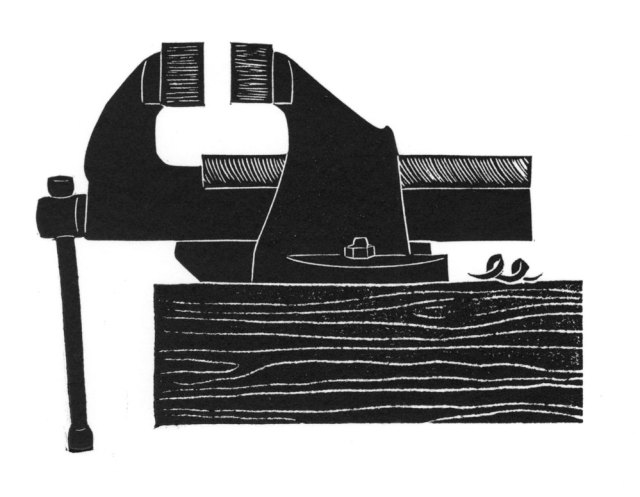You can now order hand printed linocuts of the gorgeous images that Molly Brown made for Christopher Williams’ new book “Good Work: The Chairmaking Life of John Brown.”
Molly, one of John Brown’s daughters, is offering limited editions of the 12 prints featured in the book. She is currently making the prints. Ordering will end May 15, 2020, and the prints will ship in June. Lost Art Press is offering these prints to the U.S. market. Customers in the U.K. and Europe can order the prints from her website.
All the prints are made from hand-carved plates that are inked and then printed by hand on Japon Simili paper using an Albion press in her workshop in Wales.
You can place an order here through our store. Shipping is a flat $8, no matter how many prints you order. (Order one print and the shipping is $8. Order 10 prints and the shipping is $8 total.)
Here are details on each of the prints that are available.
Cardigan Chair
12.5” x 9”, edition of 75
This chair form was the earliest one John Brown made after seeing an antique chair in an antique shop in Lampeter. It also is the chair made famous in the book “Welsh Stick Chairs.” This print is shown on the rear of the dust jacket of “Good Work.”
Primitive Armchair
12.5” x 9”, edition of 75
This chair is on the front cover and dust jacket of “Good Work” and was featured many times in John Brown’s column in Good Woodworking magazine. For many chairmakers, this chair form launched their love affair with Welsh stick chairs.
Chris Williams’ Chair
12.5” x 9”, edition of 75
A square-on elevation view of one of Chris Williams’ chairs, which is shown in Chapter 3 of “Good Work” to illustrate the different parts of a primitive Welsh stick chair.
Sentinel Chair
12.5” x 9”, edition of 50
John Brown and Chris Williams often mused that a monument to Welsh stick chairs should be built at the head of the Severn Bridge, where you enter Wales from the south or west of England. Molly created this scene for the linocut, which shows the bridge and sentinel chair in the distance.
Wales Map
12.5” x 9”, edition of 50
To orient the reader, Molly created this map of Wales to show it in relation to England, Scotland and Ireland. The map serves as the opening image to Chapter 2 of “Good Work.”
Adze
5” x 5”, edition of 75
A linocut of the adze that Matty Sears made for his father, John Brown. The image punctuates Chapter 9 of “Good Work,” the book’s chapter on John Brown’s toolkit.
Spokeshave
5” x 5”, edition of 75
A linocut of John Brown’s favorite spokeshave, the Stanley No. 53. This image graces the Preface of “Good Work,” which was written by Nick Gibbs.
Brace and Bit
5” x 5”, edition of 75
John Brown kept a rack of braces in his shop. Each held a different bit, and the braces were lined up in the order he needed them in construction of a chair. This image is used on the Table of Contents for “Good Work.”
Carningli
5” x 5”, edition of 75
The mountain that John Brown lived in the shadow of at Pantry Fields. His ashes were scattered there after his death. This image opens Chapter 3 of “Good Work.”
Eyeplug
5” x 5”, edition of 75
This image, which opens Chapter 5, requires some explanation. It is a drawing of a wooden plug inserted into the door of John Brown’s workshop at Pantry Fields. When a visitor drove up, John Brown would remove the plug to see who was coming and decide whether to answer the door.
Ty Canol
5” x 5”, edition of 75
The Ty Canol woods are a magical place, and the colors there inspired John Brown to create his green “Spirit of Wales” finish.
Mechanic’s Vice
5” x 5”, edition of 75
John Brown pioneered using a mechanic’s vise for chairmaking, eliminating the need for a shaving horse. This image opens Chapter 4 of “Good Work.”


















 Then two boxes arrived at the front door. Inside were the first copies of “
Then two boxes arrived at the front door. Inside were the first copies of “




 The good news: “
The good news: “